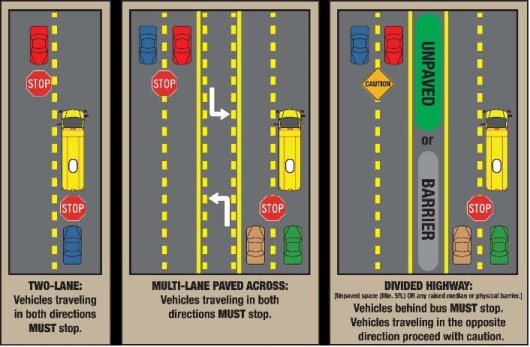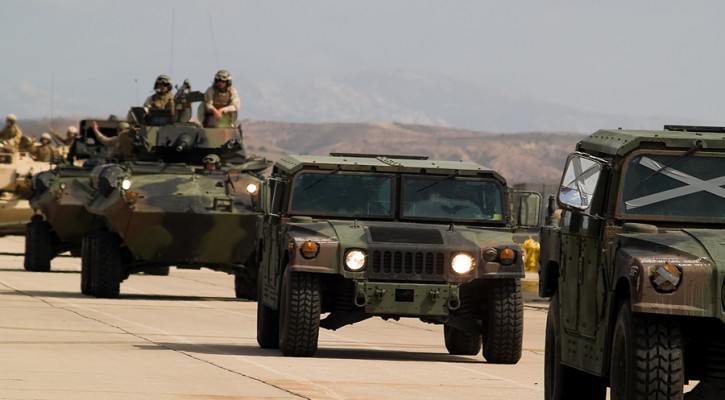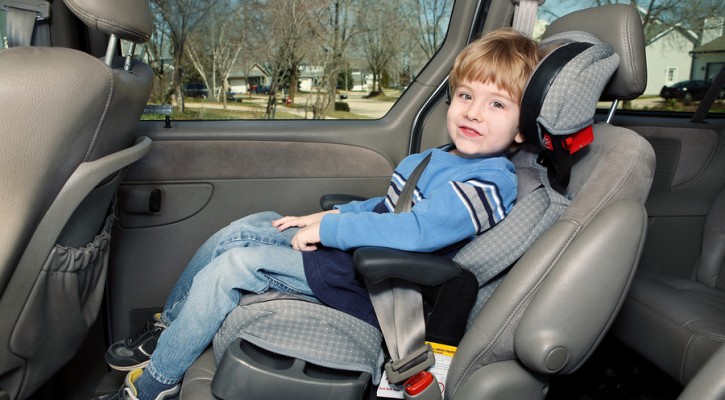Category Archive: Road Rules

School Buses Returning To Roads Soon
August 7, 2014
School buses will be returning to the roads soon as schools reopen over the next few weeks. That means re-adjusting driving habits to watch for and stop for school buses. It also means being aware of school zone speed limits and, most especially, watching for children who may not be watching for you.
According to the National Highway Transportation Administration (NHTSA), an average of 135 deaths per year have occurred in school transportation crashes. Continue Reading

USAA Offers Post Deployment Driving Tips
July 24, 2014
It’s understandable; after a long deployment where it was necessary to scan for and rapidly avoid IED’s or potential ambush points, it’s hard to turn off those critical life-saving skills after returning home where those dangers no longer exist. Driving back home poses a whole different set of dangers and transitioning from one driving environment to the other isn’t easy. Read more: Tips for Driving After Deployment

Florida Highway Patrol Targeting Aggressive Drivers
July 22, 2014
The Florida Highway Patrol is on a mission. Through the end of July, the FHP is out to identify and ticket aggressive drivers on the road. Drivers who speed, tailgate, and lane weave could become targets. Read more: Florida Highway Patrol targets aggressive driving
Innovative Road Signs Slow Drivers
July 3, 2014
Drivers tend to ignore warning signs posted by the road so new, trickier methods are called for. By using forced perspective paintings of children in the street, life-size cardboard cutout policemen, and stripes painted across the road that make drivers think they are going faster than they really are, traffic safety experts around the world are becoming more creative in their methods to warn drivers to slow down. Read more: The road design tricks that make us drive safer

Florida Law Requiring Booster Seats For Children Under 5 Inadequate!
June 30, 2014
On June 24, 2014, Florida’s governor, Rick Scott signed HB 225 into law requiring that all children under the age of 5 are required to be placed in a federally approved car safety seat or booster seat. While the law is better than the old law that allowed children over the age of four to graduate to seat belts, it still doesn’t go far enough.
To look at why the legislation isn’t enough we have to look at how seat belts work to restrain a body in a crash. If properly worn, low over the hips, a seat belt works in a crash by pushing against the hip bones. The shoulder harness works by pushing against the breast bone and shoulder bone. If the lap belt is worn too high, over the abdomen instead of low on the hips, it can cut through the soft tissue of the abdomen in a violent crash. The problem with children is that their frames are too small and narrow for the lap belt to remain low over the hips and they often ride up over the abdomen, leading to injuries in a crash.
A seat belt is better than nothing at all because the alternative in a crash would be for the child’s body to fly forward and crash into the front seat or impact multiple points within the vehicle. In violent crashes, the child’s body can be thrown out of the vehicle and strike the road surface so seat belts are always preferable to no protection at all.
The Insurance Institute for Highway Safety (IIHS) has looked at crash data and recommends that children, once they have graduated out of a child protective seat, graduate to booster seats and remain in those booster seats until they are at least 4’9” tall. For the average child, that is anywhere from 9 to 11 years of age. The booster seat works by raising the body so that the seat belt rides low over the hips, providing maximum protection in a crash. Many states have adopted the IIHS recommendations and mandated booster seats for children until they are at least 4’9” or 9 years of age.
Regardless of what the Florida law may say, parents should maximize protection for their children and keep them in booster seats until they reach the 4’9” height. For more information on child protective seats and choosing the right seat for your child, visit the IIHS website at: http://www.iihs.org/iihs/topics/t/child-safety/topicoverview
